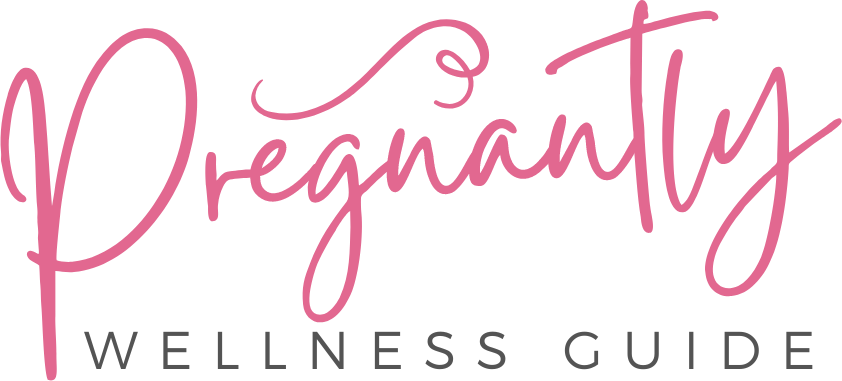
According to recent studies, postpartum weight loss can be significantly aided by incorporating core exercises into your fitness routine. Strengthening your core not only helps to flatten your tummy, but also improves posture and stability. In this article, we will explore the best core exercises specifically tailored for postpartum women aiming to shed those extra pounds. With a focus on informative guidance and empowering techniques, you will learn how to master these exercises and achieve your weight loss goals.
Key Takeaways
– Pelvic tilts and seated abdominal exercises are fundamental for postpartum weight loss and strengthening core muscles.
– Plank variations are effective for core strengthening and targeting specific areas such as oblique muscles, lower abdominals, and shoulders.
– The bird dog exercise is beneficial for core strengthening, balance, and stability, and is suitable for postpartum women with weakened muscles.
– The bridge pose targets hips, glutes, and core muscles, aids in postpartum weight loss, and can be modified for specific conditions such as diastasis recti or pelvic floor dysfunction.
Pelvic Tilts
Pelvic tilts are a fundamental exercise for postpartum weight loss that target the core muscles. During pregnancy, the body undergoes significant changes, and the pelvic floor muscles can become weak and stretched. Pelvic tilts can help to strengthen these muscles, leading to better postpartum recovery and overall fitness.
One of the key benefits of pelvic tilts during pregnancy is that they can help alleviate lower back pain. As the baby grows, the center of gravity shifts forward, putting strain on the back. Performing pelvic tilts regularly can help to realign the pelvis and relieve this discomfort.
To properly perform pelvic tilts for postpartum recovery, start by lying on your back with your knees bent and feet flat on the floor. Engage your core muscles by drawing your navel towards your spine. Slowly tilt your pelvis forward, pressing your lower back into the floor. Hold for a few seconds, then release and repeat.
Remember to breathe deeply throughout the exercise and maintain proper form. Start with a few repetitions and gradually increase as you build strength. It’s important to listen to your body and not push yourself beyond your limits.
Pelvic tilts into your postpartum exercise routine can help you regain strength and stability in your core muscles. By focusing on proper form and gradually increasing intensity, you can make significant progress in your postpartum recovery journey.
Plank Variations
There are several effective plank variations that can be incorporated into a postpartum exercise routine for optimal core strengthening and weight loss. These variations provide a challenging workout while targeting specific muscles in the core, helping new moms regain their strength and shed extra pounds. Here are four plank variations that can take your postpartum fitness to the next level:
1. Side plank variations: Side planks engage the oblique muscles on the sides of the abdomen, helping to tone and tighten the waistline. Try lifting one leg while in a side plank position to further challenge your stability and core strength.
2. Plank challenge for advanced postpartum fitness levels: Once you’ve mastered the basic plank, it’s time to take on a more challenging variation. One option is the plank with leg lifts, where you alternate lifting each leg while maintaining a strong plank position. This exercise not only targets the core but also helps to strengthen the glutes and thighs.
3. Plank with knee taps: Start in a high plank position and slowly alternate tapping each knee to the ground. This exercise targets the lower abdominal muscles and helps to improve overall stability.
4. Plank with shoulder taps: In a high plank position, lift one hand and tap the opposite shoulder. Alternate sides while maintaining a strong core. This variation not only targets the core but also improves shoulder stability.
Seated Abdominal Exercises
Seated abdominal exercises are effective for targeting and strengthening the core muscles after childbirth. These exercises can be done in the comfort of your own home and are a great way to regain strength and tone in your abdominal area. Seated abdominal stretches are a gentle way to start, as they help to release tension and increase flexibility in the muscles. To perform a seated abdominal stretch, sit tall on a chair with your feet flat on the floor. Place your hands on the sides of the chair and gently lean forward, allowing your upper body to relax and your abdominal muscles to stretch. Hold this position for 15-30 seconds, breathing deeply and focusing on the stretch.
Core strengthening exercises are another great option for postpartum weight loss. These exercises target the deep muscles of the abdomen, including the transverse abdominis, which is key for core stability. One effective exercise is the seated knee tuck. Sit on the edge of a chair with your feet flat on the floor. Lean back slightly, engaging your core muscles. Lift your knees towards your chest, bringing them as close as possible. Hold for a few seconds, then slowly lower your feet back to the floor. Repeat this exercise for 10-12 repetitions.
Abdominal stretches and seated core strengthening exercises into your postpartum workout routine can help you regain strength and tone in your abdominal area. Remember to start slowly and listen to your body. With consistency and patience, you will see progress in your postpartum weight loss journey.
Bird Dog Exercise
Continuing our exploration of effective core exercises for postpartum weight loss, let’s now delve into the Bird Dog Exercise. This exercise is not only beneficial for strengthening the core muscles, but it also helps improve balance and stability, making it an ideal choice for postpartum recovery. Here are some key benefits and modifications of the Bird Dog Exercise during postpartum recovery:
1. Core Strengthening: The Bird Dog Exercise targets the deep abdominal muscles, pelvic floor, and lower back, helping to restore strength and stability in the core.
2. Gentle on the Body: As a low-impact exercise, the Bird Dog is gentle on the body, making it a suitable option for postpartum women who may have weakened pelvic floor muscles or diastasis recti.
3. Modifications: To accommodate postpartum recovery, you can modify the Bird Dog Exercise by performing it on all fours, rather than being on your hands and knees. This modification helps alleviate pressure on the wrists and provides additional support for the core.
4. Incorporating the Bird Dog Exercise: To optimize your postpartum fitness routine, aim to include the Bird Dog Exercise at least three times a week. Start with 10 repetitions on each side and gradually increase the intensity as your core strength improves.
Bridge Pose
Moving on from the previous subtopic of the Bird Dog Exercise, let us now explore the benefits of incorporating the Bridge Pose into your postpartum fitness routine for core strength and weight loss. The Bridge Pose, also known as Setu Bandhasana, is a powerful yoga pose that targets the hips, glutes, and core muscles.
One of the key benefits of the Bridge Pose for postpartum recovery is its ability to strengthen the pelvic floor muscles. During pregnancy and childbirth, the pelvic floor muscles undergo significant strain and may become weakened. By practicing the Bridge Pose, you can engage and tone these muscles, helping to improve bladder control and overall pelvic floor strength.
The Bridge Pose helps to strengthen the core muscles, including the rectus abdominis and transverse abdominis. These muscles, which may have become stretched and weakened during pregnancy, are crucial for restoring core stability and aiding in postpartum weight loss.
Modifications and variations of the Bridge Pose can be incorporated to suit the needs of postpartum women. For those with diastasis recti, a condition where the abdominal muscles separate, it is important to modify the pose by keeping a small bend in the knees and engaging the deep core muscles. Women with pelvic floor dysfunction can benefit from using props such as yoga blocks or a bolster to support the hips and reduce strain on the pelvic floor.
Conclusion
From pelvic tilts to plank variations, seated abdominal exercises to the bird dog exercise, and the bridge pose, these exercises can help strengthen your core muscles, improve posture, and aid in shedding those extra pounds. Just like a sturdy foundation supports a house, a strong core supports your body, allowing you to tackle daily tasks with ease and confidence. So, let’s get started on building a stronger, healthier you!







